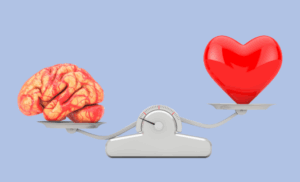I don’t want to be a prophet of doom, but if you have been asked to be a spokesperson for your organisation or company and you have not done this job before, be prepared to face some common mistakes. You may be a professional with an innate intuition for communicating messages to the public and the media. You may consider yourself a good consumer of content and have seen or read enough interviews to identify what works and what doesn’t work. Despite all this, you will rarely fall into any of the following pitfalls that, with the right time and preparation, you will be able to address when it’s your turn to go in front of the camera.
1. The swing
One of the most annoying things in an audiovisual interview is the pendulum movement of the respondent when standing up. It is easy for it to disappear when you answer sitting down, as in videoconferencing. However, when this is not the case, nerves tend to make us sway, shifting the weight of the body from one foot to the other until the microphone is removed and the camera is switched off. For this reason, you should try to anchor your feet well and, with minimal bending of the knees, maintain an upright position without moving your legs. Few things divert as much attention from our speech as this awkward movement.
‘In this interview and as Chiquito de la Calzada would say, Christian Gálvez moves more than prices’.
2. Catchphrases
Most of us believe that we do not use crutches when we speak. But when we record ourselves speaking, we identify repeated utterances or empty words that literally fill the silence between one sentence and the next. The best way to identify these awkward sounds is to record our speech, either by phone or computer, and listen to ourselves carefully. You will see how quickly you can spot the words you are leaning on too much, as well as if you are abusing unnecessary noises. Remember something important: silence is not a bad thing. You must get used to pauses and to the fact that you don’t have to make a sound every time you are asked a question.
‘Breathing in too eagerly can have this effect’.
3. The elusive eyes
A fundamental thing when you are interviewed is to look into the eyes of your interlocutor. You will not always feel comfortable with this. There are various tricks to solve this problem. What is very common is to look around when you have to give a thoughtful answer and need to think it through. When we feel insecure, we tend to look to the sides and even to the ceiling, as if we were looking for the answers in those places. It is a reflexive, fleeing movement that, when repeated too often, conveys discomfort and the feeling that the interviewee would rather be somewhere else. It is important to avoid such wandering and to keep your gaze on the interviewer’s surroundings, reducing these moments of disconnection as much as possible.
Are you going to be the perfect spokesperson if you correct these flaws? Not necessarily. However, being aware of these little problems will help you not only to improve your delivery, but also to concentrate more on what you say and how you say it. And if you feel that you could do with a more thorough preparation, we might be able to help you with that.












